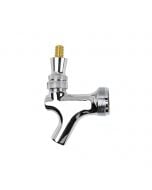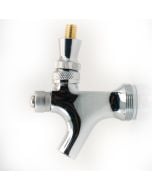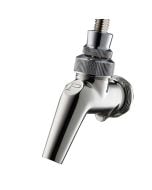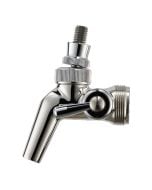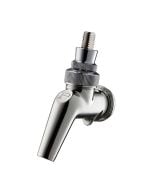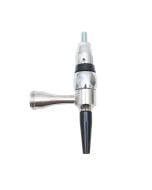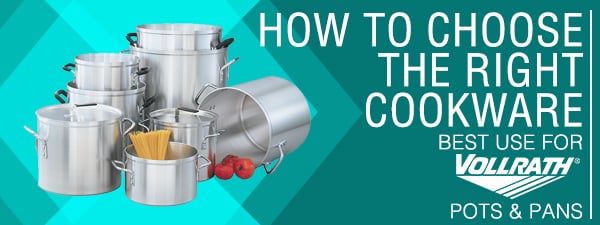A Guide to Common Beer Faucet Types and Their Benefits
- Jun 29, 2020
- 0 Comments

Choosing the correct beer faucet for your beverage dispensing system is crucial - as the last component your beer touches before it reaches the glass, faucets can make or break the perfect pour.
Standard Faucets
Standard faucets are the most common type of faucet and can be used to pour almost every type of beer. Because of their popularity, they are a solid choice for most establishments - they are easy to install and replacement parts are readily available. They tend to be rear-sealing, and can be found in a number of sizes and finishes so you can find one that fits your beer decor perfectly.
One of Rapids' most popular standard faucets is the Round Top Chrome Faucet. This faucet has a quick-acting handle and a ball washer that is fabricated from smooth, durable materials to extend the life of the faucet.
With an almost 5-star rating, this faucet has been noted as a "great value for [the] price" and "perfect!"
Stout Faucets
Stout faucets are designed with a restrictor faucet nozzle that forces the beer through a restrictor disc, creating a thick, creamy white head. If you are planning on serving nitrogenated beer (such as Guinness), a stout faucet is a necessity. This applies to any beer that is dispensed using nitrogen or a nitrogen/carbon dioxide gas mix.
The Rapids Stout Faucet can be used to serve either nitro brew or nitro coffee and is made of corrosion-resistant stainless steel. Corrosion can ruin the taste of your beer, as it allows mold, yeast, and other harmful materials to build up inside the keg faucet.
Self-Closing
Help conserve your beer with a self-closing faucet. When your bartender releases the tap handle, the faucet will close automatically and completely.
If you have bartenders that tend to overfill pitchers or glasses by setting them down and walking away, this faucet is the solution. If they take their hand off the faucet, it will shut off.
The design also prevents waste from leaky faucets that aren't quite shut all the way.
The Taprite Self-Closing Faucet utilizes a reliable spring device to keep your beer (and money) from going down the drain. It has a vent port to prevent beer from becoming trapped in its spout, and it's easy to both assemble and disassemble for cleaning and repair.
Forward-Sealing
Forward-sealing faucets control the flow from the front end of your faucet and are designed so that any beer that gets past the seal ends up in the glass. This means that no beer gets trapped in the body of the faucet where it is exposed to oxygen and can spoil.
The Perlick Forward-Sealing Faucet is made of 304 stainless steel and has fewer internal parts than most faucets, providing better reliability and requiring fewer repairs. The stainless construction won't pit or tarnish, and is the metal of choice for wine serving as well.
According to a review from Scout, "This faucet works great, doesn't stick, and maybe two drops come out after [you're] done pouring."
Creamer
If you want more control over the amount of foam in your beer, a creamer faucet is the right choice for you.
With the Perlick Faucet with Push-Back Creamer, when you push the creamer handle back, the beer is forced through small holes, creating a creamy head. This faucet is also forward-sealing, which will help you conserve beer.
Don't just take our word for it:
"I recently received and installed my new faucets...I'm very pleased with how easy these new faucets operate! No more issues with sticky when you use your faucets infrequently. Also love the pushback creamer function truly works as advertised!" - John 5/13/19
Flow Control
Flow control faucets feature a flow compensator that allows you to adjust the restriction and slow the flow of the beer. This is an excellent option if you work with hard-to-pour brands; fill samplers, flights, or growlers regularly; or use frosted glasses.
The Perlick Flow Control Faucet is made of stainless steel so it won't pit or tarnish, and it also incorporates the forward-sealing design. The polished interior ensures a smooth flow with less agitation and foaming.






